How To Make Juicy & Crispy Salmon Cake Recipe
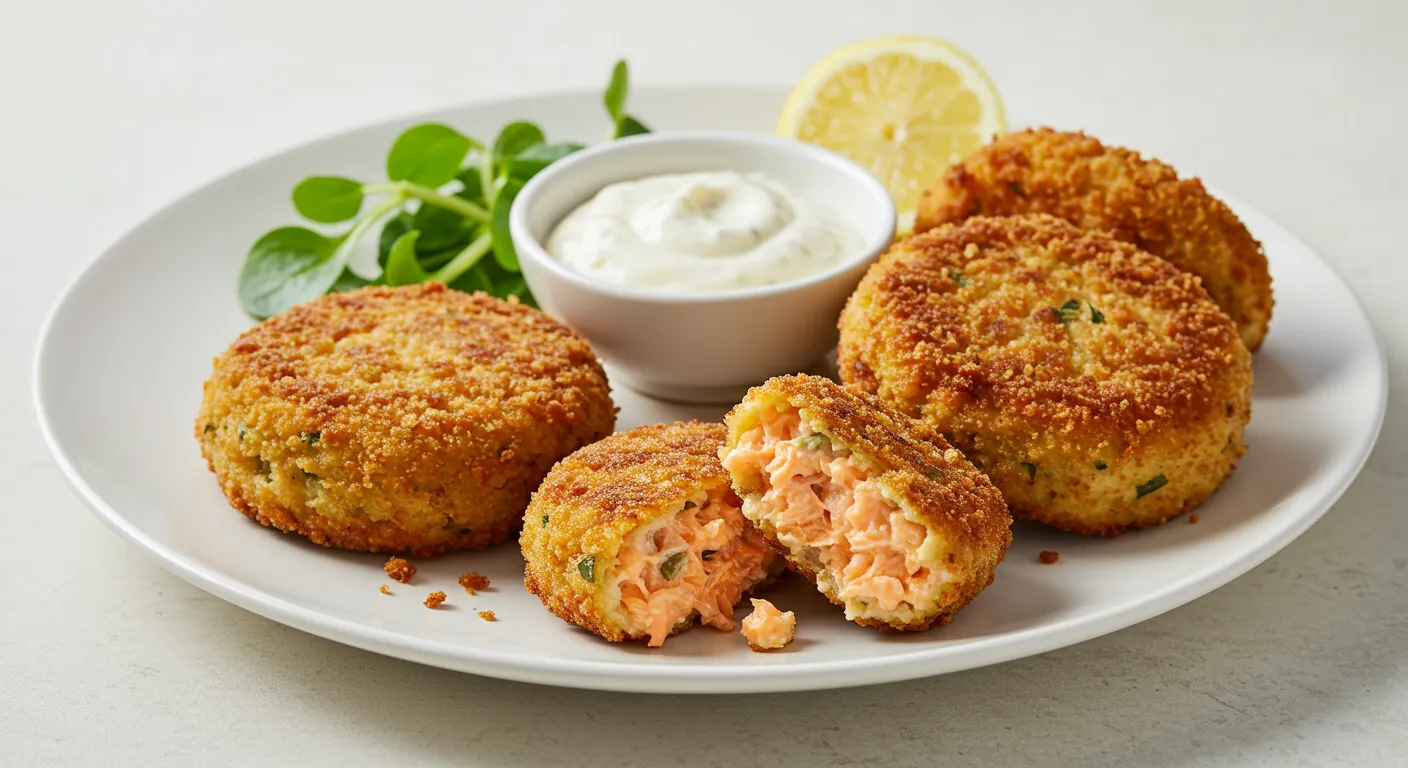
There’s something undeniably satisfying about biting into a perfectly cooked salmon cake—crispy and golden on the outside, tender and flaky on the inside. This salmon cake recipe transforms simple ingredients into an impressive meal that’s both elegant and comforting. Whether you’re looking to repurpose leftover salmon or create a delicious seafood dinner from scratch, these salmon patties deliver restaurant-quality results with minimal effort.
Table of Contents
Why This Salmon Cake Recipe Works
Salmon cakes (also known as salmon patties or salmon croquettes) have been a beloved staple in many households for generations. What makes this particular salmon cake recipe special is the perfect balance of ingredients that ensure both exceptional flavor and texture. The combination of fresh herbs, zesty lemon, and savory seasonings complements the natural richness of salmon without overpowering it.
Unlike many salmon patties that fall apart during cooking, this salmon croquettes recipe includes the perfect binding agents to maintain structure while keeping the interior moist. The exterior develops a beautiful golden crust that provides a satisfying contrast to the tender interior.
QUICK RECIPE CARD: JUICY & CRISPY SALMON CAKES
- Prep Time: 15 minutes
- Chill Time: 30 minutes
- Cook Time: 8 minutes
- Total Time: 53 minutes
- Difficulty: Easy
- Servings: 6 salmon cakes (serves 3-4 people)
EQUIPMENT NEEDED
- Large mixing bowl
- Small mixing bowl
- Measuring cups and spoons
- Large skillet
- Spatula
- Paper towel-lined plate
NUTRITIONAL INFORMATION (per serving, 2 cakes)
- Calories: 320
- Protein: 22g
- Fat: 18g
- Carbohydrates: 15g
- Fiber: 1g
- Sodium: 450mg
Ingredients for Perfect Salmon Cakes
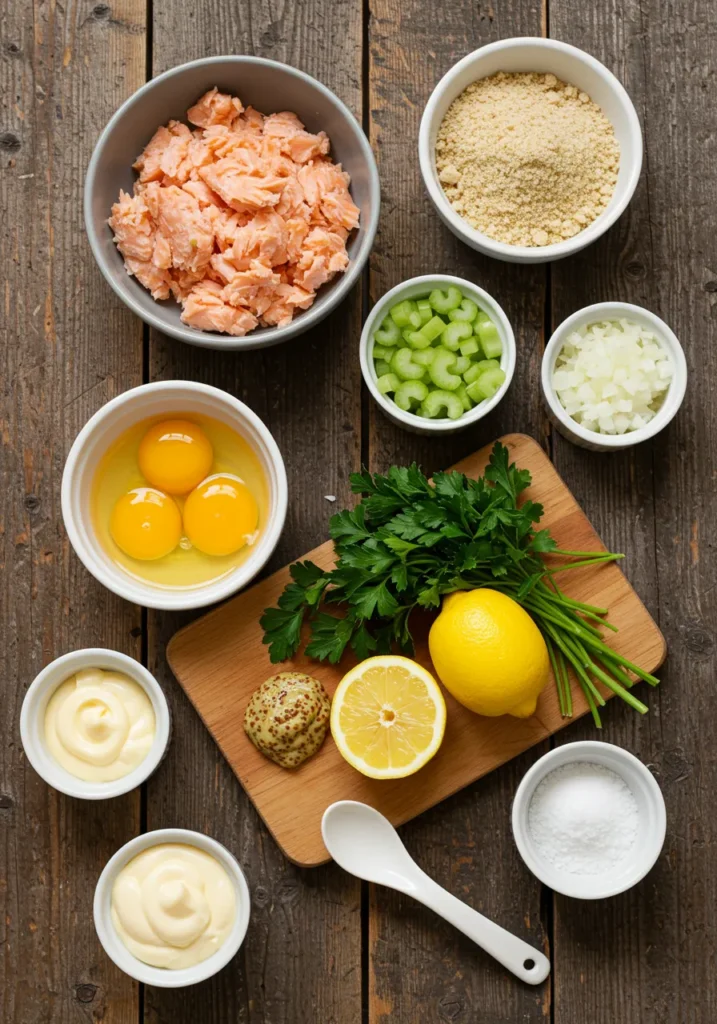
For the Salmon Cakes:
- 1 pound fresh salmon fillets (or 14-16 ounces canned salmon, drained)
- 1 cup panko breadcrumbs, divided
- ¼ cup finely diced red bell pepper
- ¼ cup finely diced celery
- 3 tablespoons minced fresh chives
- 2 tablespoons finely chopped fresh dill
- 2 tablespoons mayonnaise
- 1 tablespoon Dijon mustard
- 1 large egg, lightly beaten
- 1 tablespoon fresh lemon juice
- 1 teaspoon lemon zest
- ½ teaspoon Old Bay seasoning
- ¼ teaspoon salt
- ¼ teaspoon freshly ground black pepper
- 3 tablespoons olive oil for frying
For the Lemon Dill Sauce:
- ½ cup mayonnaise
- 2 tablespoons chopped fresh dill
- 1 tablespoon fresh lemon juice
- 1 teaspoon lemon zest
- 1 small garlic clove, minced
- Salt and pepper to taste
How to make salmon patties: Step-by-Step Instructions
Preparing the Salmon
If using fresh salmon for your salmon cake recipe:
- Preheat your oven to 375°F (190°C).
- Grab a baking sheet, line it with parchment paper, and put the salmon fillet on it.
- Lightly drizzle with olive oil and season with salt and pepper.
- Bake for 15-18 minutes until the salmon flakes easily with a fork but is still moist.
- Let the salmon cool completely before flaking with a fork, removing any skin and bones.
If using canned salmon:
- Drain thoroughly.
- Remove any skin and bones if desired (though these are edible and add calcium).
- Flake with a fork in a large bowl.
Creating the Salmon Cake Mixture
- In a large mixing bowl, combine the flaked salmon, ¼ cup of the panko breadcrumbs, diced bell pepper, celery, chives, and dill.
- In a small bowl, combine mayonnaise, Dijon mustard, the beaten egg, lemon juice, lemon zest, Old Bay seasoning, salt, and pepper. Whisk until well blended.
- Pour the wet ingredients over the salmon mixture and fold gently until well combined, being careful not to overmix as this can make your salmon cakes dense.
- Cover the bowl and refrigerate for a minimum of 30 minutes, or for as long as 2 hours. This is a very important step as it allows the mixture to firm up. This will make it easier to shape into patties that will maintain their form while they are cooking.
Forming and Cooking the Salmon Cakes
- Place the remaining ¾ cup of panko breadcrumbs in a shallow dish.
- Using a ⅓ cup measure or ice cream scoop, portion the salmon mixture and form into patties about 3 inches in diameter and ½ inch thick.
- Gently coat each patty in the panko breadcrumbs, pressing lightly to help the crumbs adhere.
- Grab a big skillet and warm up some olive oil over medium heat until it starts to look a little shimmery.
- Gently put the salmon cakes into the heated skillet, being mindful not to put too many in at once. If needed, cook them in multiple sets.
- Cook on each side for 3 to 4 minutes until golden brown and crispy.
- Place on a plate lined with paper towels to remove any extra oil.
Making the Lemon Dill Sauce
While your salmon cakes are chilling, prepare the simple yet flavorful sauce:
- Combine all sauce ingredients in a small bowl. Whisk until the mixture is smooth.
- Cover and refrigerate until ready to serve with your salmon patties.
Tips for the Best Salmon Cake Recipe
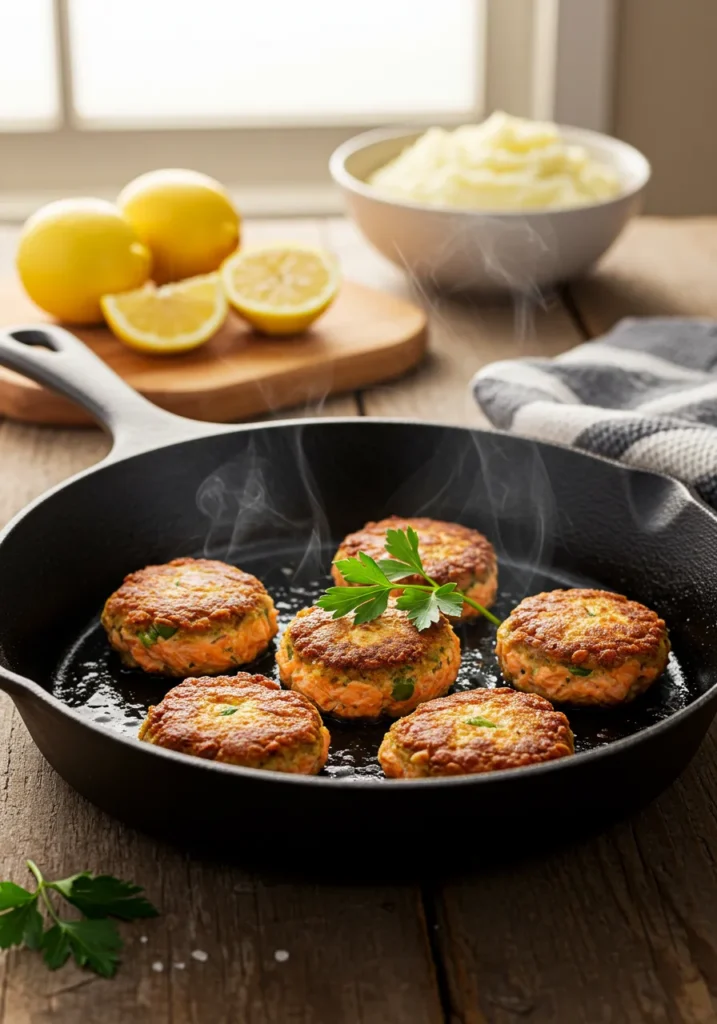
Selecting the Right Salmon
Both fresh and canned salmon work well in this salmon cake recipe, but each offers slightly different results:
- Fresh salmon provides a cleaner flavor and more vibrant color. For the juiciest salmon cakes, choose wild-caught salmon like sockeye or coho, which have a higher oil content than farm-raised varieties.
- Canned salmon is an affordable and convenient option that works surprisingly well. Look for wild-caught varieties packed in water. The canned version often includes small, edible bones that add calcium to your meal.
Achieving the Perfect Texture
The texture of your salmon cakes hinges on a few key factors:
- Don’t overmix the salmon mixture, which can lead to dense, tough patties.
- Chill thoroughly before forming into patties—cold mixture holds together better.
- Don’t skimp on the binding ingredients (egg and mayo); they’re essential for keeping everything together.
- Handle gently when forming and flipping to maintain their structure.
Flavor Variations for Your Salmon Patties
While this classic salmon cake recipe is delicious as written, you can customize it to suit your taste:
- Mediterranean style: Add ¼ cup crumbled feta cheese, 2 tablespoons chopped Kalamata olives, and switch the dill for fresh oregano.
- Asian-inspired: Combine 1 tablespoon of grated ginger and 1 teaspoon of sesame oil. Serve with a dipping sauce made from soy sauce and ginger.
- Spicy version: Mix in a finely diced jalapeño and ½ teaspoon cayenne pepper for heat.
- Herb lovers: Double the fresh herbs or experiment with different combinations like parsley, tarragon, or basil.
Serving Suggestions for Salmon Cakes
These versatile salmon croquettes recipe can be served in numerous ways:
- As an elegant appetizer, make mini salmon cakes and top with a small dollop of the lemon-dill sauce and a sprig of fresh dill.
- For a light lunch, serve on a bed of mixed greens with sliced avocado and cherry tomatoes.
- As a satisfying dinner, pair with roasted vegetables and a quinoa salad.
- For a traditional and satisfying meal, pair with mashed potatoes and steamed green beans.
- Make a salmon cake sandwich by placing a patty on a toasted brioche bun with lettuce, tomato, and the lemon-dill sauce.
Storing and Reheating Salmon Cakes
One of the beauties of this salmon cake recipe is how well the patties hold up for leftovers:
- Refrigerate cooked salmon cakes for up to 3 days in an airtight container.
- Freeze uncooked patties by placing them on a parchment-lined baking sheet until solid, then transfer to a freezer bag. They’ll keep for up to 3 months.
- Reheat refrigerated salmon cakes in a 350°F oven for 10 minutes or until warmed through. For the crispiest results, avoid microwaving.
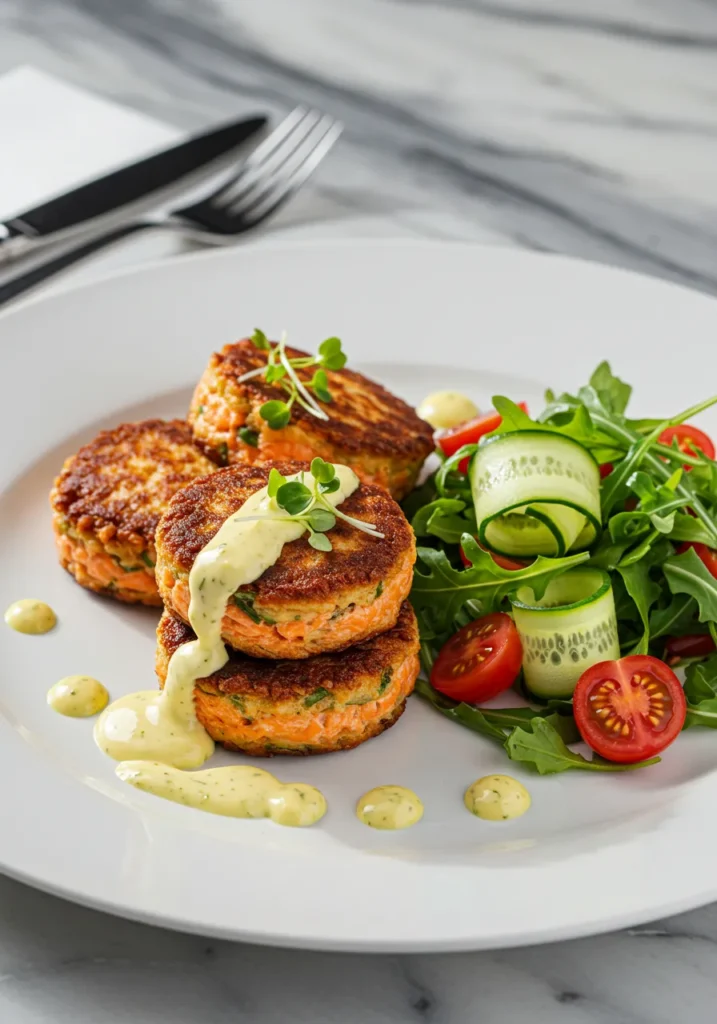
What to Avoid When Making Salmon Patties
Even experienced cooks sometimes struggle with salmon cakes. Here are pitfalls to avoid:
- Using salmon that’s too wet: Make sure to thoroughly drain either fresh or canned salmon before using it. Excess moisture is the enemy of a cohesive salmon cake.
- Skipping the chilling step: Patience pays off! Don’t rush the refrigeration process, as it helps the flavors meld and the mixture firm up.
- Making the patties too thick: Thinner patties (about ½ inch) cook more evenly and develop a better ratio of crispy exterior to tender interior.
- Cooking at too high a temperature: Medium heat is ideal—too hot and the outside will burn before the inside is fully cooked.
- Flipping too early: Wait until you see the edges turning golden before attempting to flip your salmon cakes.
Why Make This Salmon Cake Recipe?
Beyond being delicious, these salmon cakes offer numerous benefits:
- They’re an excellent source of omega-3 fatty acids, which support heart and brain health.
- This recipe transforms economical canned salmon into an impressive meal.
- Salmon cakes freeze well, which makes them ideal for preparing meals in advance.
- They are versatile and suitable for an appetizer, lunch, or dinner.
- The recipe is adaptable to what you have on hand—swap herbs, change the vegetables, or adjust the seasonings.
Final Thoughts on Perfecting Your Salmon Cake Recipe
The humble salmon cake has stood the test of time as a beloved dish in many cultures. This particular salmon cake recipe strikes the perfect balance between traditional comfort food and sophisticated flavors. The key to success lies in respecting the quality of your ingredients, allowing time for flavors to develop, and handling the mixture with a gentle touch.
Whether you’re cooking these salmon patties for a weeknight family dinner or an elegant gathering with friends, they’re sure to impress. The crispy golden exterior giving way to a tender, herb-flecked interior creates a textural experience that keeps you coming back for more.
So gather your ingredients and give this salmon cake recipe a try—you might just find it becomes a permanent addition to your cooking repertoire. With practice, you’ll develop your own signature touches that make these salmon cakes uniquely yours.
FAQ: Salmon Cake Recipe
Can I use canned salmon instead of fresh?
Yes! Canned salmon works perfectly in this recipe. Look for wild-caught varieties packed in water and drain thoroughly before using. The canned version often includes small bones that are soft, edible, and add calcium to your meal.
How do I keep my salmon cakes from falling apart?
The key is proper binding and chilling. Make sure to include all the binding ingredients (egg and mayo), don’t skip the 30-minute refrigeration step, and handle the patties gently when forming and flipping them.
Can I make salmon cakes ahead of time?
Absolutely! You can prepare the mixture up to 24 hours in advance and keep it refrigerated. You can also form the patties ahead of time—just place them on a parchment-lined tray, cover, and refrigerate until cooking time.
What can I substitute for panko breadcrumbs?
Regular breadcrumbs work well, though the texture will be slightly different. For gluten-free options, try gluten-free breadcrumbs, crushed Rice Chex cereal, or almond flour.
Can I bake these salmon cakes instead of pan-frying?
Yes! Arrange them on a parchment-lined baking sheet, spray or brush with oil, and bake at 425°F for about 15 minutes, flipping halfway through. They won’t be quite as crispy as pan-fried, but still delicious.
How do I know when salmon cakes are fully cooked?
Salmon cakes should be golden brown on both sides and reach an internal temperature of 145°F. They should feel firm to the touch and be heated through to the center.
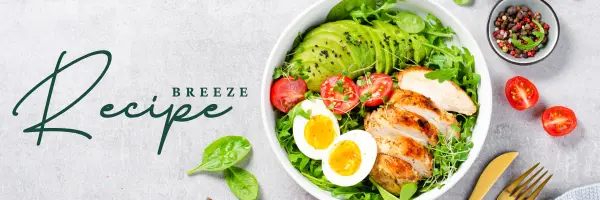
2 thoughts on “How To Make Juicy & Crispy Salmon Cake Recipe”